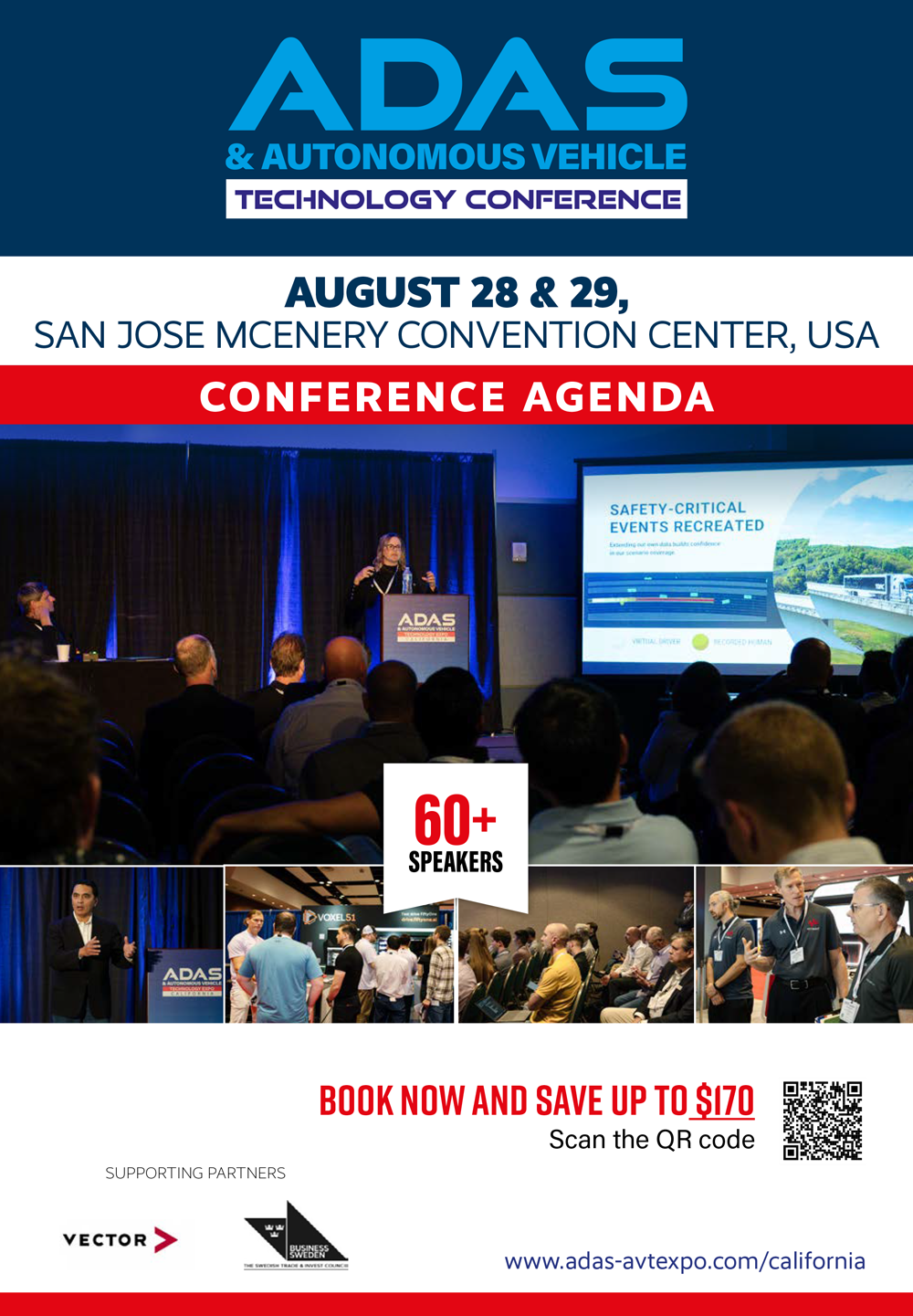Conference Program
The full conference program has been announced!
The two-day conference brings together world-leading experts in autonomous vehicle research, AI, software, sensor fusion, AV testing, validation, development, standards and safety. 50+ speakers from international OEMs, Tier 1 suppliers, R&D centers and innovative transportation startups will share best practices and innovative strategies. Hear from IBM, Volvo Cars, Torc Robotics, Tier IV, The Goodyear Tire & Rubber company, Argonne National Laboratory and more.
Room 1
Key issues, strategies and innovations and their implications for safe AD/ADAS development and deployment
9am - 12.50pm
Moderator
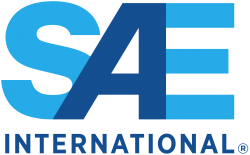 Dr Sven Beiker
Dr Sven BeikerExternal advisor
SAE International
USA
9am
Continuously delivering safety cases for an ADAS/AD product – easy?
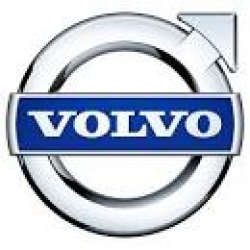 Hakan Sivencrona
Hakan SivencronaSenior technical leader
Volvo Cars
Sweden
For traditional E/E systems for automotive, if that is an allowed expression, functions were developed to be sufficiently good, such as ABS. ISO 26262 was then applied to enable the definition of additional means and measures so that implementation would be reasonably safe for use, or fulfilling the ISO 26262 safety norm. For ADAS and AD we have a more complex situation. We are more or less forced to release functional growth along with the advances of functional development and the verification and validation of the same. This puts very stringent requirements on the components that constitute the ADAS or AD. All safety-relevant components need to have their contribution to the safety case known and deviations of the same taken care of by the system. What does that imply? A lot. The presentation will elaborate on some of the areas of concern such as the SeooC concept and ODD expansion in the light of ISO 26262, as well as verification in the light of ISO 21448.
9.25am
Transitioning from research to production-level autonomous vehicle testing
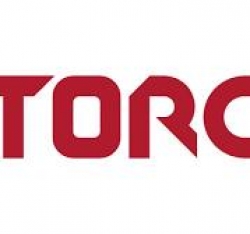 Evan Smith
Evan SmithEngineering manager for vehicle testing
Torc Robotics Inc.
USA
Torc has a rich, diverse history in the autonomous vehicle space dating back to 2005. Since becoming an independent subsidiary of Daimler in 2019, Torc has become laser-focused on delivering an autonomous long-haul trucking solution. Torc’s team of highly trained test crew (in-vehicle fallback test drivers and safety conductor) are an important part of its research and development testing to help ensure safety. The research testing has evolved into a rigorous development lifecycle process. As we progress toward driverless operations, a cohesive cross-platform SIL/HIL/VIL testing strategy which includes best practices and standards will need to be employed. Attend the session to learn about Torc’s testing journey including specific testing examples its our plans for continuing to work toward delivering a safe and reliable autonomous solution.
9.50am
Developing and validating an AI-first autonomous driving system
 Tilo Schwarz
Tilo SchwarzVice president, head of autonomy
Nuro
USA
The talk presents the Nuro Driver, its current architecture and main components, perception, mapping and localization and behavior. We look into the machine learning and robotics parts of the Nuro Driver and our approach to ensure the safety of the generated trajectories. We also show how to test and validate that the overall system works as intended.
10.15am - 10.45am
Break
10.45am
Applying modern AI to advanced autonomous driving
 Dr Anurag Ganguli
Dr Anurag GanguliVP of R&D
Plus
USA
Join Anurag's presentation and dive into the application of latest AI models in developing autonomous driving technology, discuss the transformative impacts of modern AI in building more robust and adaptive AD systems and share Plus’s real-world commercialization experience across the U.S., Europe and Australia.
11.10am
The role of inertial sensors for automated driving
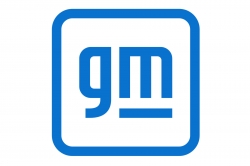 Curtis Hay
Curtis HayTechnical fellow
General Motors
USA
In addition to perception sensors such as cameras, lidar and radar, accurate vehicle localization requires intelligent use of 'absolute' sensors such as GNSS, inertial measurements and a high-definition map. This presentation describes some of the key requirements and design trade-offs for inertial sensors, and how these sensors contribute to automation in challenging environments.
11.35am
High-definition sensor redundancy for automated driving
 Waqas Malik
Waqas MalikBusiness development, North America
Valeo
USA
This presentation will demonstrate the value added by imaging radar, thermal cameras and lidar for automated driving. It will discuss situations where one sensor doesn't perform well but is compensated for by the other two modalities. It will focus on key use cases such as lost cargo.
12pm
Tire intelligence for ADAS and AV applications
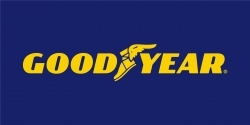 Kanwar Bharat Singh
Kanwar Bharat SinghProgram manager, algorithms and software engineering
The Goodyear Tire & Rubber Company
USA
This presentation will offer a comprehensive look at Sightline Technology, Goodyear’s innovative suite of tire intelligence solutions. By integrating sensory data with cutting-edge algorithms, Sightline delivers crucial insights for next-generation software-defined vehicles (SDVs). We will showcase specific examples demonstrating how these insights can enhance ADAS and AV applications.
12.25pm - 2pm
Lunch
Room 1
Regulations, standards, metrics and collaboration – building blocks for safe ADAS and AD technologies
2pm - 5.25pm
Moderator
 Katherine Sheriff
Katherine SheriffLead, mobility and transportation industry group
Davis Wright Tremaine
USA
2pm
Test & deployment of autonomous vehicles in California – a regulatory update
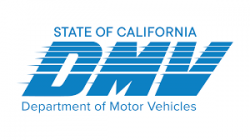 Miguel Acosta
Miguel AcostaAutonomous vehicle chief
California Department of Motor Vehicles
USA
California is the birthplace and epicenter of autonomous vehicles and remains at the heart of AV testing. In what has been an eventful year, it’s more important than ever to keep up-to-date with regulatory developments, and engineers wishing to test their technologies on California’s streets should not miss this presentation.
2.25pm
Automated driving system behavior evaluation
 Azadeh Dinparastdjadid
Azadeh DinparastdjadidSenior research scientist
Waymo
USA
The behavioral capability of the automated driving system (ADS) is an important attribute of ADS safety. Behavioral capabilities can be categorized into three broad categories: regulatory compliance, conflict avoidance and collision avoidance. In particular, the annexes in ISO 2022 highlighted the need for more detailed scenario-dependent behavioral evaluation around conflict avoidance. Assuming the identification of a set of scenarios a-priori, this points to the need for objective metrics that can evaluate whether the behavior of the ADS meets the scenario-specific behavioral targets. This presentation aims to discuss computational metrics that can be used as behavioral benchmarks for flagging when ADS behavior does not meet expectations. Such metrics can also be applied to discovering novel scenarios and events with behavioral issues from existing data sets.
2.50pm
Building trust in AVs via safety metrics
 Quresh Sutarwala
Quresh SutarwalaSystems engineer
Applied Intuition
USA
 Anne Kickton
Anne KicktonLead systems engineer
Applied Intuition
USA
A safety case is a topic that has been much discussed when it comes to safe deployment for AVs. Within the framework, it becomes critical to talk about what metrics are identified, generated and reported upon. Even more critical is their relevance and impact on building trust and confidence, internal and external. This topic dives into metrics within a safety case and their value and impact in building trust.
3.15pm - 3.45pm
Break
3.45pm
Implementing operational design domain for real-world operation
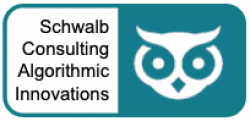 Dr Edward Schwalb
Dr Edward SchwalbConsultant
Schwalb Consulting llc
USA
The concept of operational design domain (ODD) has been discussed in research and industry for a number of years but real-world applications beyond testing are not yet on the road. Regulations will demand a comprehensive ODD description for type approval as well as service area approval.
In this presentation we walk through simple ODD definitions which can be leveraged in multiple aspects of the development process, including for type approvals. We will discuss how the ODD can be developed and rendered testable. We focus on development of an ODD specification which is technically precise, verifiable and human interpretable.
4.10pm
What is the AVSC and how is it influencing standards?
 Edward Straub
Edward StraubExecutive director
SAE-ITC
USA
The presentation will include an overview of the AVSC (Automated Vehicle Safety Consortium) and its mission regarding the development of best practices and how they lead into other standards organizations, along with the impact and influence AVSC has had since its inception in 2019.
4.35pm
Open Source SDV Development: Autoware Open AD Kit 3.0
 Christian John
Christian JohnPresident
Tier IV
USA
This presentation will introduce the Autoware Open AD Kit 3.0, a collaborative effort from key software-defined vehicle stakeholders such as Arm, AWS, eSync Alliance, Leo Drive, Excelfore, RedHat, PIX Moving, SOAFEE and TIER IV. The Open AD Kit framework is a testament to Autoware Foundation's vision of developing SDV solutions based on open standards and collaboration. On the technical side, the presentation will go through the company's elaborate CES demo to explain the essential components (cloud-native, DevOps, OTA, containerization, etc) that enable the big loop, a concept that is frequently used to describe how modern software development methodologies are translating into automotive.
5pm
Revolutionizing ADAS: Enhancing Safety Assurance through AI Integration
 Vikas Vyas
Vikas VyasTechnical Leader
Mercedes-Benz Research & Development North America
USA
Zheyuan Xu
Software solution provider
independent
USA
Software solution provider
independent
USA
Advanced driver-assistance systems (ADAS) leverage artificial intelligence (AI) to improve vehicle safety and driving comfort. The integration of AI in ADAS functions plays a pivotal role in ensuring these systems are not only innovative but also meet the highest safety standards. Join this presentation to learn about the evolving ADAS/Safety lifecycle and the various impacts of AI on enhancing safety assurance.
Room 2
Developing software, AI, big data and architecture – challenges and innovations
9am - 12.50pm
Moderator
 Dr Edward Schwalb
Dr Edward SchwalbConsultant
Schwalb Consulting llc
USA
9am
Empowering the automotive ecosystem through collaborative mapping
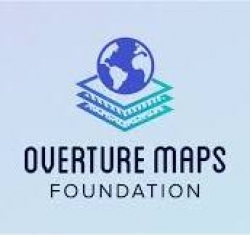 Marc Prioleau
Marc PrioleauExecutive director
Overture Maps Foundation
USA
The automotive industry is being transformed by connected vehicles and advanced perception systems, generating a wealth of data that has the potential to revolutionize mapping. However, challenges in data processing, integration and standardization remain. Overture Maps offers a collaborative solution. It provides an open, customizable base map for driver-facing navigation and machine-readable applications, empowering the automotive ecosystem to build unique map products, enhance user experiences and unlock new revenue streams. By establishing interoperability for automotive data layers like traffic, hazards and parking information, Overture enables a rich ecosystem for seamless data exchange. Sensor data generated by millions of vehicles holds tremendous potential. However, challenges remain in standardizing data formats, streamlining mapmaking and establishing efficient sharing mechanisms. We invite OEMs, suppliers and the broader automotive ecosystem to collaborate with us to unlock the full potential of this data. Together, we can enhance map quality and coverage while fostering innovation and efficiency only possible through collaborative mapping. Join us to learn how Overture is empowering the automotive ecosystem to harness the full potential of collaborative mapping.
9.25am
Exploring generative AI in AD/ADAS: applications and limitations
 Esti Mor Yosef
Esti Mor YosefSenior program manager
Microsoft
USA
9.50am
Developing and deploying self-driving technology safely
 Sean Harris
Sean HarrisDirector of embodied AI
Wayve
USA
After two decades and billions of dollars being poured into self-driving, access to this technology is limited to a few locations. Before we can realize the tremendous personal and societal value that driving assistance and automation promise to deliver, we must design a system that can safely and verifiably handle the persistent long-tail of real-world driving scenarios. Traditional systems have failed to tackle the long-tail of driving scenarios using brittle and time-consuming rules-based programming. Wayve is pioneering a new approach using end-to-end embodied AI. Wayve will present its end-to-end embodied AI as a solution to effectively handle complex, real-world driving situations.
10.15am - 10.45am
Break
10.45am
Accelerate AV development with data-driven automotive AI
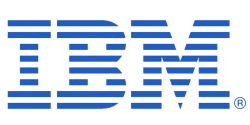 Chris Maestas
Chris MaestasChief executive architect, IBM storage for data and AI solutions
IBM
USA
Developing AVs is a time-intensive and complex process that requires best-in-class data and AI training infrastructure. Companies developing software-defined vehicles need to accelerate time-to-market and minimize costs without sacrificing safety, combining vehicle sensors, map data, telematics and navigation guidance using machine learning and data fusion techniques. Data-
driven development is not without its challenges. One of the biggest challenges is data collection and integrity, as data needs to be collected accurately and consistently to drive accurate decisions. Additionally, data-driven development requires data analysis capabilities, as information needs to be analyzed and interpreted to make meaningful decisions. Finally, data-driven development requires collaboration between stakeholders and technical teams to ensure that data is being used appropriately. In close collaboration with Red Hat and Nvidia, IBM will deliver fully integrated systems that bring AI-powered computing to everywhere data is created, from the edge to
the cloud, helping businesses easily deploy tailored AI applications to drive innovation. This presentation examines how to best leverage AI-powered data infrastructures and software to accelerate AV development and achieve maximum efficiency.
11.10am
Accelerating ADAS and autonomous vehicle development with cloud-native solutions
 Vineeth Venkiteswaran
Vineeth VenkiteswaranWW solutions and GTM strategy lead, autonomous driving
Amazon
USA
 Stefano Marzani
Stefano MarzaniWW tech leader, SDV
Amazon Web Services
USA
 Girish Shirasat
Girish ShirasatSenior director of product management
Qualcomm
USA
Autonomous vehicles collect petabyte-scale sensor data. The IoT FleetWise Rich Sensor data solution allows auto makers to scale the collection and transfer of meaningful data by defining driving campaigns, enabling them to extract more value and context, reducing the time and cost of autonomous driving feature development. Simultaneously, software is playing a pivotal role in vehicle design and evolution, driving the transition toward software-defined vehicles (SDVs). This session will showcase the latest breakthroughs in cloud-native development, demonstrating how auto makers can leverage AWS and Qualcomm technologies, such as the Snapdragon Digital Chassis, to scale and accelerate vehicle software development, including leveraging virtualized digital twins and cloud-native tools to test and validate code. This session aims to equip attendees with the knowledge and strategies to embrace the 'Big Loop' of data-driven and software-defined development, accelerating the path to safer and more capable ADAS and autonomous vehicle technologies.
11.35am
Integrating FPGA and AI technology
 Gordan Galic
Gordan GalicTechnical marketing director
Xylon
Croatia
 Rehan Tahir
Rehan TahirSenior manager, automotive product management and marketing
AMD
USA
Without new architectural solutions for immediate implementation, silicon chip manufacturers struggle to keep up with automotive innovation. As a driver of automotive progress, AMD is able to solve this with new embedded AMD Ryzen™ processors and adaptable FPGA/SoCs, elevating heterogeneous computing. We will be discussing the benefits of the AMD new offerings and demonstrate them on Xylon’s Surround View system with integrated AI capabilities. This POC showcases a unique combination of programmable FPGA logic for data pre-processing, dedicated AI processing partitions, and scalar processing on a multi-core part for post-processing. Performance metrics and demonstration videos will highlight advantages of this hybrid compute platform.
12pm
Data management and the homologation challenge
 Omar Elzeiny
Omar ElzeinyStrategic product manager
dSPACE
Germany
To introduce automated driving systems (ADS) to market, OEMs must demonstrate ethically acceptable safety levels, which requires achieving a positive risk balance amid numerous real-world risk factors. Real-world data insights must be complemented with model-based and scenario-based testing methodologies. In this talk, we will explore leveraging AI for identifying critical data sequences and using advanced technologies like GenAI for automated scenario generation. Additionally, we will outline innovative solutions in smart fleet management to address data coverage gaps for ADS development and validation. This holistic approach aims to accelerate development cycles by optimizing data acquisition and enhancing safety validation processes.
12.25pm
Unlocking the future of autonomous vehicles: Scalability for next-gen mobility
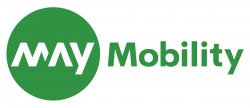 Alessandro Norscia
Alessandro NorsciaVice president of product
May Mobility
USA
The path to scalable autonomous driving demands more than just cutting-edge technology—it requires a holistic system design that combines driving performance with efficiency, and adaptability. May Mobility’s patented Multi-Policy Decision Making (MPDM) technology redefines real-time decision-making in autonomous vehicles, ensuring safe, adaptable operations across diverse environments. By combining this technology with meticulously characterized Operational Design Domain (ODD) elements and other techniques acquired through real-world experience, May Mobility’s approach enables AVs to scale across new cities and routes with unmatched precision and efficiency.
This session will explore the critical importance of integrating AI and data analytics to overcome the complexities of AV scalability, to mastering the long-tail of real-world driving scenarios. Attendees will gain insights into the future of autonomous driving, learning how to harness AI-powered decision-making and end-to-end system design to accelerate deployment, enhance safety, and drive the future of urban mobility. Join us to explore the intersection of technology, data and AI in transforming autonomous vehicle development.
12.50pm - 2pm
Lunch
Room 2
Key components in the ADAS/AD test and development toolchain
2pm - 5pm
Moderator
 John Komar
John KomarExecutive director, Automotive Centre of Excellence (ACE)
Ontario Tech University
Canada
2pm
ADAS performance variability in unique and challenging scenarios
 Sean Scally
Sean ScallySenior associate
Exponent Inc.
USA
The presentation will explore ways of visualizing the performance of certain ADAS features in scenarios currently tested in NHTSA's NCAP and provide insight into some unique and challenging scenarios where performance is degraded or becomes more variable.
2.25pm
ODD modeling, scenarios and ODD coverage – safety-driven validation
 Gil Amid
Gil AmidChief regulatory affairs officer
Foretellix
Israel
The presentation introduces modeling of ODD (operational design domain) in ASAM OpenSCENARIO DSL 2.1, and incorporating it into safety-driven validation of ADS. It presents virtual testing, interaction of scenarios and ODD. Specific attention will be given to the challenges of modeling ODDs and validating correct behavior of the ADS within an ODD.
2.50pm
Simple on-production target verification of ADAS software
 Tim Foster
Tim FosterSenior solution consultant
ETAS
USA
In order to validate that your autonomous software is capable of behaving correctly in all driving scenarios, including those one in 10 million driving events, it is necessary to employ a comprehensive simulation and testing methodology that supports the replay of real-world vehicle data. The cornerstones of a comprehensive testing strategy most likely include a pure virtual software open loop (SoL) solution as well as a hardware open loop (HoL) testing solution. Together with our OEM customers, we have identified an additional market need for a simpler and less expensive (compared with HoL) production target replay and simulation solution.
3.15pm - 3.45pm
Break
3.45pm
Development of ADAS systems: from critical scenarios to virtual hardware
 Akshay Sheorey
Akshay SheoreySiemens Simcenter automotive industry ADAS/AD lead
Siemens Industry Software Inc.
USA
The rapid advancement of software-defined vehicle and related advanced driver assistance systems (ADAS) necessitates a progressive approach not just to software development but also the electronics hardware and physical systems development for delivering the features. By leveraging holistic digital twins, auto makers can significantly enhance the robustness and thorough testing of ADAS functionalities. This shift left approach integrates scenario-based testing, virtual validation and compliance with Safety Of The Intended Functionality leveraging virtual hardware for digital validation before the hardware is finalized.
4.10pm
Efficient driver behavior computation for ADAS
 Dinesh Manocha
Dinesh ManochaProfessor - department of computer science
University of Maryland
USA
Existing ADAS only automate basic vehicle control like cruise and lane management. No ADAS currently assists by observing other drivers' behaviors and styles. The University of Texas, Austin presents algorithms that identify nearby drivers' behaviors and actions using readily available sensors directly on vehicles in real time with minimal computational demands. These algorithms use unprocessed sensor data, avoiding any data processing and allowing seamless integration into existing ADAS. Behavior prediction ADAS fit between the perception and the planning layers of the autonomous vehicle infrastructure. The algorithms have been applied to diverse traffic data from India, China, Singapore and the USA, demonstrating their global applicability.
4.35pm
Reduction of parameter space scenario testing via safety model
 Dr Sean Hubbard
Dr Sean HubbardResearch scientist
GCAPS
USA
Reduction of the parameter space for synthetic scenario creation is conducted with a novel approach using the GCAPS safety model. Using real-world data from perception systems, CISS, or naturalistic driving data, the decomposition process of GCAPS creates a concrete scenario. The concrete scenario is parameterized, and ranges of the parameters are identified. The safety model uses the object trajectories, road path and informed statistics to determine several metrics such as conflict probability. Applying the safety model to the concrete scenario and parameter ranges segregates the parameter space by the safety model metrics, enabling a focused evaluation of the ADAS.

